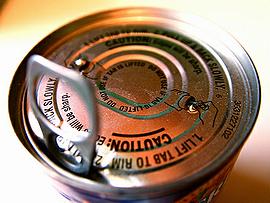 歐盟環境部長會議於22日表示,歐洲民眾的健康與環境可能受到併用多種有毒物(特別是環境荷爾蒙)混合效應的傷害。儘管如此,會議仍決定,在明年執委會相關報告出爐前,將不會對此議題做出決定。
歐盟環境部長會議於22日表示,歐洲民眾的健康與環境可能受到併用多種有毒物(特別是環境荷爾蒙)混合效應的傷害。儘管如此,會議仍決定,在明年執委會相關報告出爐前,將不會對此議題做出決定。
各國部長於會後聲明中承認,「人類及動植物接受到許多不同來源與途徑的各樣化學物。最近一項研究顯示,來自多種化學物質的混合效應(包括生殖毒素及其他因內分泌干擾素造成的反效果」,對人類健康與環境將可造成嚴重的負面影響。」
環境部長表示,他們十分關切丹麥環保署一項關於接觸多種化學物質的研究結果,研究中顯示出兒童日常生活中不自覺的的暴露在多種內分泌干擾素中。內分泌干擾素也稱為賀爾蒙干擾素,作用相同於雌激素。
會議結論強調,進一步的化學品政策、研究與評估化學物混合效應的方法是必需的。」聲明中並提到,現有的歐盟法規大多是基於個別的化學品評估方法。
部長們表示,它們正等待2010年初歐盟將完成的一項研究報告,對評估多重化學物的混合效應造成的風險,進行科學性檢驗。同時,部長們也正等待另兩項2010年將完成的執委會報告。其一是關於執行內分泌干擾素的社區策略,其二是歐盟環境與衛生行動方案的審查報告。
多個環境、衛生、婦女及消費者團體,對於部長會議承認接觸多種化學物會導致所謂「雞尾酒效應」一事,表示歡迎。但他們警告,當務之急是「對減少暴露在不同來源的有害化學品採取緊急措施,並群找更安全的替代品。」
賀爾蒙干擾素包含鄰苯二甲酸酯(phthalates)與酚甲烷(bisphenol-A)。前者做為PVC塑膠品的軟化劑,常見於地板鋪材與鞋類。後者則廣泛用於製造硬質透明塑膠,如奶瓶、罐頭內裡及DVD。
在歐盟許多國家,估計有1/5的年輕男性生育能力受影響。公民團體指出,近來的研究顯示,具賀爾蒙干擾作用的化學物質可能造成胎兒缺陷,提高睪丸癌發生率,並減少精子數量。
公民團體正敦促歐盟執委會就化學品混合效應,於現行法規中提出具體的修正案,特別是《化學品註冊、評估、許可和限制法案》(REACH)法案。
EU Environment ministers meeting in Brussels today expressed concerns that the health of Europeans and the environment may not be well protected from the combined effects of multiple toxic chemicals, particularly those that can disrupt hormones. Yet, they have decided to postpone taking any action to reduce exposure until a report by the European Commission is completed next year.
In a statement following their meeting, the ministers acknowledged that "human beings, animals and plants are exposed to many different chemicals from different sources and pathways, and that recent studies indicate that combination effects of these chemicals, including reproductive toxicity and other adverse effects from endocrine disrupters, can have serious negative implications for human health and the environment."
The environment ministers said they are concerned by the results of a study by the Danish Environmental Protection Agency concluding that there are situations in which exposure to multiple chemicals is of concern, illustrated by children's simultaneous exposure to several endocrine disrupting substances in everyday life. Endocrine disrupters, also called hormone disrupters, simulate the action of the female sex hormone estrogen.
The ministers emphasized that "further action in the field of chemicals policy, research and assessment methods to address combination effects of chemicals is required," noting that existing EU legislation in most cases builds on a "chemical-by-chemical assessment approach."
The ministers said they are waiting for research from the European Commission to be finalised by early 2010 to examine the scientific basis for assessing the risks due to combination effects of exposure to multiple chemicals.
They are also waiting for a Commission report on the implementation of the Community Strategy for endocrine disrupters and also for a review of the EU Action Plan on Environment and Health, both expected sometime in 2010.
Environment, health, women's and consumer organizations said they welcome the ministers' recognition of the risks of the so-called "cocktail effects" of multiple chemical exposures. But they warn that what is really needed are "urgent measures to reduce exposure to hazardous chemicals from various sources and their substitution with safer alternatives."
Hormone-disrupting chemicals include some phthalates, which are softeners used in PVC plastic products such as flooring and shoes, and bisphenol-A, widely used to make hard clear plastic such as baby bottles, tin can linings and DVDs.
With one in five young men in several EU countries now estimated to have impaired fertility, the groups also point to recent studies showing that chemicals with hormone disrupting properties are suspected of playing a role in birth defects, the increasing rates of testicular cancer and the decline in sperm counts.
The groups are urging the European Commission to prepare concrete amendments to deal with the combination effects of chemicals in existing EU legislation, in particular REACH, the EU chemicals law - the acronym stands for Registration, Evaluation, Authorization and Restriction of Chemicals.


